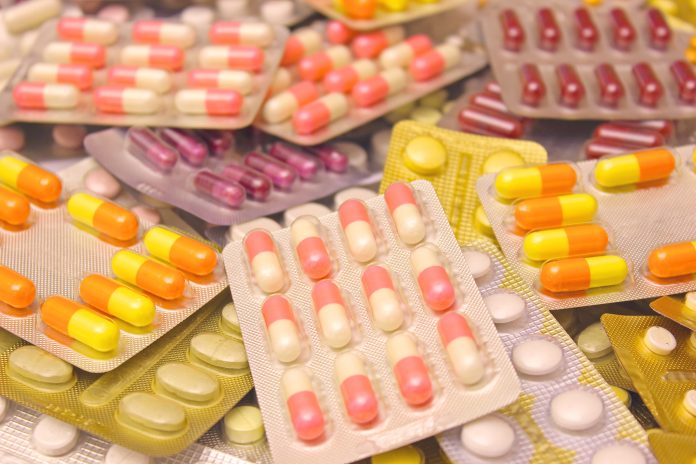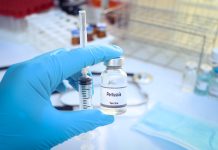Rex Clements, CEO at Centrient Pharmaceuticals, discusses how the upcoming EU Pharma Strategy can prevent shortages and strengthen Europe’s manufacturing base, especially for antibiotics
COVID-19 has put the complexity of pharmaceutical supply chains front of mind, not least with the EU considering new measures to reshore manufacturing in its planned pharmaceutical strategy. We all share the same goal: preventing medicine shortages and ensuring that medicines reach patients in a timely way. But what we still need to establish is a common vision of how to best achieve this.
Earlier this year, pharmaceutical companies had to contend with temporary lockdowns affecting manufacturing sites, closed borders impacting usual activities as well as restrictions on imports and exports. This led to heightened concerns about major supply chain disruptions and shortages of medical supplies and life-saving medicines, that put patients at risk and national health systems under pressure.
Diversified supply chains
While one response has been to call for the complete repatriation of pharmaceutical supply chains, this task would be both impossible and unwise. COVID-19 has in fact demonstrated the need for a more balanced approach that spreads risk and emphasises diversity of supply.
Diversified supply chains turned out to be an essential factor in preventing a global meltdown and have allowed the cogs to continue turning. Centrient Pharmaceuticals are one of the few remaining manufacturers of these to retain a manufacturing presence in Europe – in The Netherlands and Spain. The crucial factor allowing them to keep up with demand during the pandemic has been our manufacturing presence not only in Europe, but also on multiple continent.
Europe needs a research and manufacturing infrastructure that both allows it to be competitive at global level as well as diversified enough to resist potential global disruptions. As mentioned on a panel at the European Health Forum Gastein, this is currently within grasp. If EU policy makers genuinely want to protect pharmaceutical supply chains, they must focus on increasing Europe’s attractiveness as a place to invest.
In recent years, there has been a large shift in pharmaceutical manufacturing – particularly of antibiotics – to India and China. Antibiotics are generic, off-patent medicines that typically do not cost much. With buyers’ focus on price, there has been a consolidation in the market at various steps in the supply chain, due to an increasing number of players exiting the market, as they saw the market as too competitive.
Speaking from the perspective of beta-lactam antibiotics, which we manufacture, Europe is quite dependent on third countries in regular times, much more in pandemic times. A concrete example are cephalosporins antibiotics, which are used to prevent hospital-acquired surgical infections. In Europe, there are about 40 companies marketing the finished product, which appears like a healthy market, but the reality is different. When you take a closer look, those 40 marketers get their product from 10 manufacturers of the finished product who in turn source their API from currently 2 sources. Those two sources rely on a single intermediate manufacturer left in Europe producing 7-ADCA – the precursor material to cephalosporin API. Centrient are that intermediate manufacturer.
As mentioned, Centrient’s backward-integrated supply chain has meant they are less dependent on other suppliers. Many others do not have the same operational best practices in place. While decision-makers grapple to find a solution, they must also make sure it is future-proof and able to withstand other looming crises. Yes, COVID-19 has been disruptive. But the twin threat of antimicrobial resistance and climate change could be worse.
The solution?
One of the key actions is to consider the real value that antibiotics bring to society and health systems and reflect that in the market price. This would allow manufacturers to return to the field. We also need to pay attention to the way antibiotics are produced, as unsustainable manufacturing practices contribute to antimicrobial resistance and climate change. By requiring or rewarding clean and sustainable antibiotic manufacturing in their tenders, governments can help shape the sustainable behaviour their people deserve. Changes in procurement expectations will be a direct signal to companies and help stimulate a race to the top (sustainable practices) rather than a race to the bottom (lowest prices at all costs/risks)
This wouldn’t be Europe treading in unchartered waters: recent strategies, such as the Farm to Fork and the European Green Deal, place sustainability right at their centre. Companies are starting to rethink their production chains to limit their carbon footprint and meet other sustainability criteria. This is what we want to see in the health area too.
A “green and clean” future for antibiotics has been already driving our company for decades. Through the use of enzymatic production technologies, with a lower carbon footprint, and cleaning our wastewater to prevent release of antibiotics into the environment, we make our contribution to fight climate change and antimicrobial resistance. We pride ourselves in applying the same high manufacturing standards in all our sites around the world, driving a similar change in the supply chain at the same time.
When the European Pharma Strategy is announced in late November, I hope to see a strategy that promotes competitiveness by playing to Europe’s strengths. One approach could be to issue tenders that prioritise criteria like green innovation and supply chain resilience and diversity, instead of focusing solely on the lowest price; otherwise member states might find themselves in a self-defeating strategy. More diverse supply chains and more environmentally friendly production will help the EU withstand other looming crises: antimicrobial resistance and climate change.











